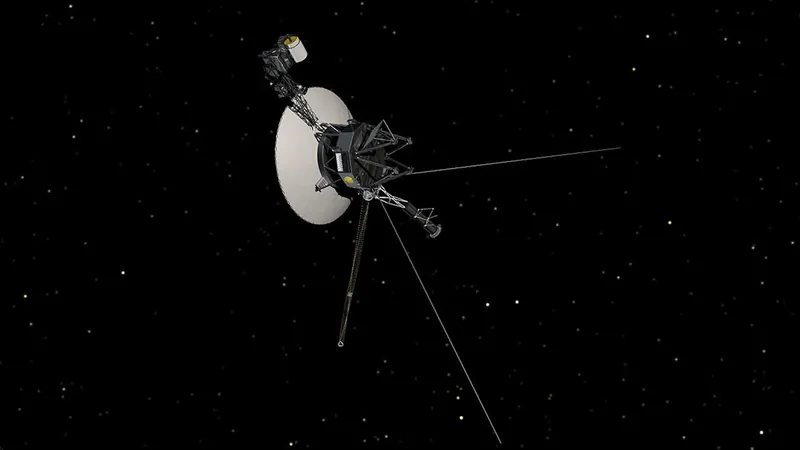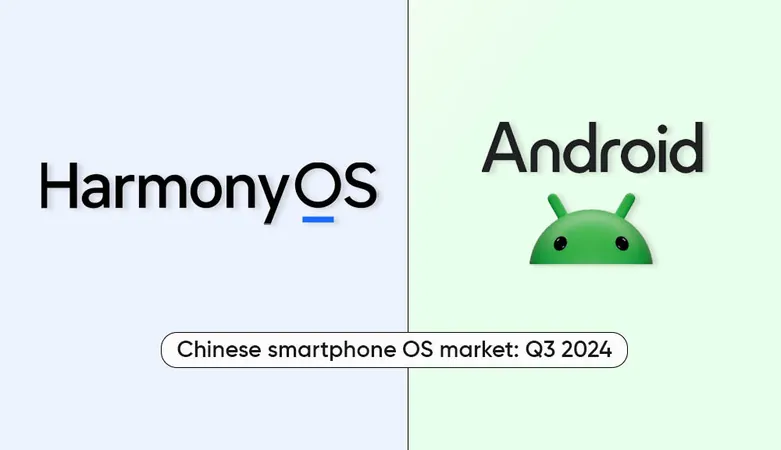
Voyager 1 Reconnects with NASA After Mysterious Communication Blackout, Uses Ancient Backup Transmitter!
2024-10-30
Author: John Tan
In a surprising turn of events, NASA's Voyager 1 has experienced a temporary loss of contact with mission control from October 19 to 24, 2023. The incident was triggered by a technical malfunction that forced the spacecraft's primary radio transmitter to shut down, leaving scientists scrambling to re-establish communication. The team has since succeeded in connecting with Voyager 1 using a backup transmitter, which remarkably hasn't been activated since 1981!
According to NASA's latest blog post, the disruption in communication was caused by the spacecraft's onboard fault protection system. This system is designed to autonomously mitigate issues by conserving power—certain essential systems must remain operational, while non-critical functions, like the main transmitter, can be temporarily disabled. “For instance, if the spacecraft draws more power than available, the system will power dowm non-essential systems to maintain essential operations,” officials explained.
Now back in touch, engineers are pouring over the data to identify the problem that caused the blackout. They warn it may take several days or even weeks to get to the bottom of this mystery.
Interstellar Communication Challenges
Voyager 1, currently venturing more than 15 billion miles (24 billion kilometers) from Earth, is the most distant human-made object in existence. This incredible distance means that commands sent from Earth take approximately 23 hours to reach the probe, with a similar delay for responses to return. A slight technical glitch can lead to significant communication gaps that experts find frustrating yet fascinating.
The unusual communication failure is believed to have begun on October 16 when engineers attempted to activate one of Voyager 1's heaters. Although there was sufficient power for the command to be executed, it inadvertently triggered the fault protection mechanism instead, leading to confusion and a loss of signal.
Upon efforts to contact Voyager 1 through NASA's Deep Space Network—a global system of powerful antennas designed for interplanetary missions—NASA experts initially found no signal. By sheer luck, they detected a faint signal later that same day, but concerns grew as communication ceased entirely the next day, causing alarm in the control room.
A Blast from the Past
It appears that during the communication blackout, Voyager’s fault protection system triggered additional times, ultimately forcing the spacecraft to switch from its main X-band radio transmitter to its older S-band transmitter. NASA officials clarified that while the S-band transmitter consumes less power, it’s “significantly fainter,” making communication more challenging.
"Voyager 1 hasn’t transmitted data using the S-band since 1981—a true blast from the past!” commented one engineer, underscoring the spacecraft's historic longevity and resilience.
On October 22, engineers successfully sent a command to confirm the use of the backup transmitter. To their relief, they were able to reestablish full contact with Voyager 1 just two days later.
As the engineering team works diligently to diagnose the root cause of this glitch, the mission continues to epitomize the age of exploration. Voyager 1 and its twin, Voyager 2, have provided invaluable data about our solar system and beyond, and their journeys are far from over. Space enthusiasts and scientists alike remain on the edge of their seats, speculating what new discoveries may come from Voyager 1 in the days to come.
Stay tuned for updates on the iconic Voyager missions – who knows what mysteries lie ahead in the great beyond!




 Brasil (PT)
Brasil (PT)
 Canada (EN)
Canada (EN)
 Chile (ES)
Chile (ES)
 España (ES)
España (ES)
 France (FR)
France (FR)
 Hong Kong (EN)
Hong Kong (EN)
 Italia (IT)
Italia (IT)
 日本 (JA)
日本 (JA)
 Magyarország (HU)
Magyarország (HU)
 Norge (NO)
Norge (NO)
 Polska (PL)
Polska (PL)
 Schweiz (DE)
Schweiz (DE)
 Singapore (EN)
Singapore (EN)
 Sverige (SV)
Sverige (SV)
 Suomi (FI)
Suomi (FI)
 Türkiye (TR)
Türkiye (TR)